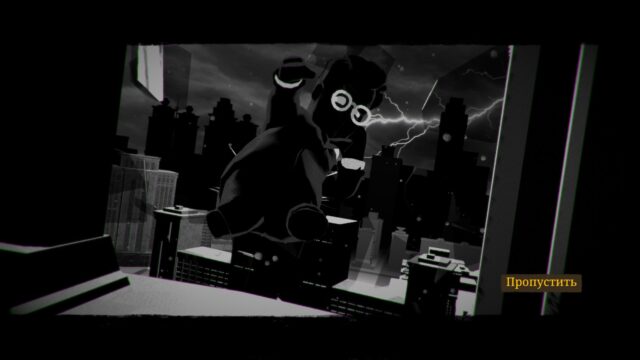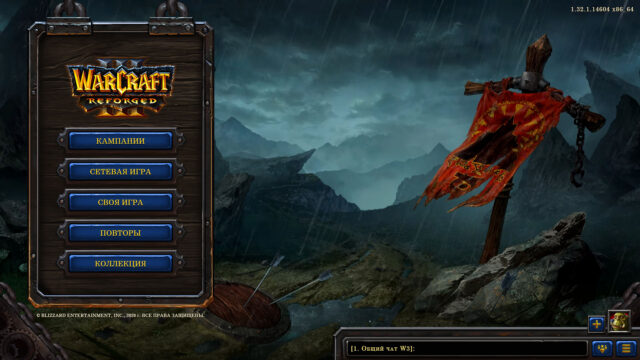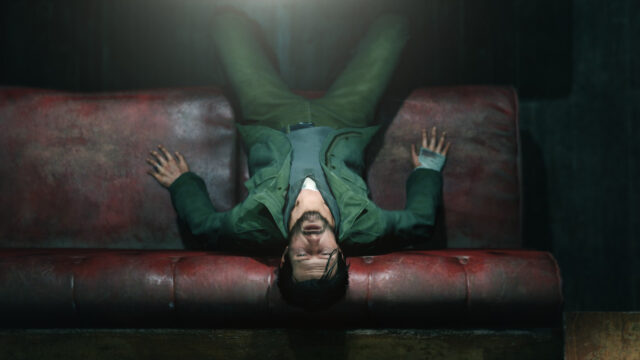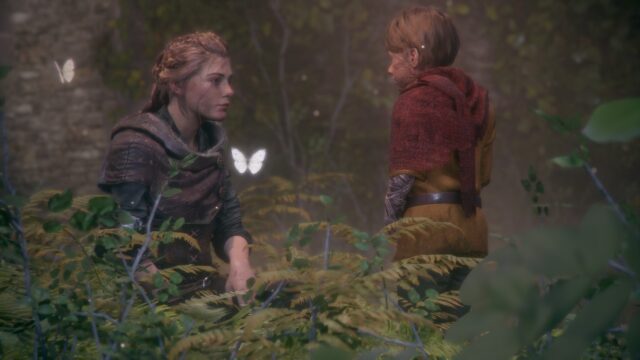Not Alone at Home – Resident Evil 7: Biohazard Review
The first presentation of Resident Evil 7 left us slightly puzzled. Capcom seemed to have grown tired of twisting and turning the cult series in an attempt to please the audience and took the path of least resistance. Look at them, they didn’t like the gloomy forty-hour shooter or the episodic parody of the old school. Since you love “Outlasts” so much, we’ll make our own, but with a redneck and flies. And let’s throw in virtual reality on top. Fussy people.
However, what impressed us about this hastily put together VR creation turned out to be a pleasant attempt to blend modern trends with centuries-old genre traditions. To achieve, that is, the golden mean. And this horror cocktail, despite a slight bitterness, turned out to be about 400 times better than the garbage we’ve been served in the past few years.

The Baker family estate, where Ethan, our brand new main character, sets off in search of his missing wife, from the very beginning makes the fragile hearts of the series’ veterans beat faster. Yes, it’s “Resident Evil in a mansion” again. Despite the mountains being replaced by the swamps of Louisiana, and the rich interiors by the modest furnishings of a farmhouse, there are no fewer puzzles, dangers, and tense wandering here than before.
Returning to its roots, the seventh installment not only winks at the knowledgeable fans but also follows the original’s traditions. Exploring the area has once again become the main element of the game. Rarely does a door open without problems – usually, the necessary key is at the end of that corridor, and you can only reach it through a secret passage from another wing of the building. And the passage itself is secret precisely because you won’t see it without solving a puzzle. And that puzzle, in turn… Well, it’s not an easy task.
You don’t need great intelligence to overcome the prepared puzzles, but it is still extremely interesting to uncover the secrets of the mansion. Behind each obstacle lies a substantial portion of content, so motivation never runs out. This is what Resident Evil needed, perhaps more than anything else. Not a non-stop action movie on rails, but a measured exploration in a troubled yet still calm atmosphere.
Which the unfortunate inhabitants of the house love to disturb.

The Bakers are a model family. There are rumors that their guests disappear without a trace, but that’s all nonsense. Here they are, right on the dining table in front of the TV! Help yourself.
We decide that the meal is not to our liking, which greatly angers the hosts. So much so that for a good portion of the game, the hero will have to actively avoid the prospect of becoming an Ethan sandwich, hiding from the family of psychopaths in the darkest corners.
Stealth is important in Resident Evil 7, especially in the early stages, but the game is not focused on chases and hiding. In most cases, these episodes are brief and tightly scripted to hide the quirks in the artificial intelligence’s behavior. It seems as if it is not adapted to this kind of “chasing” and strictly follows limited scripts, but the constantly whistling shovel hovering overhead rarely gives a chance to notice this.
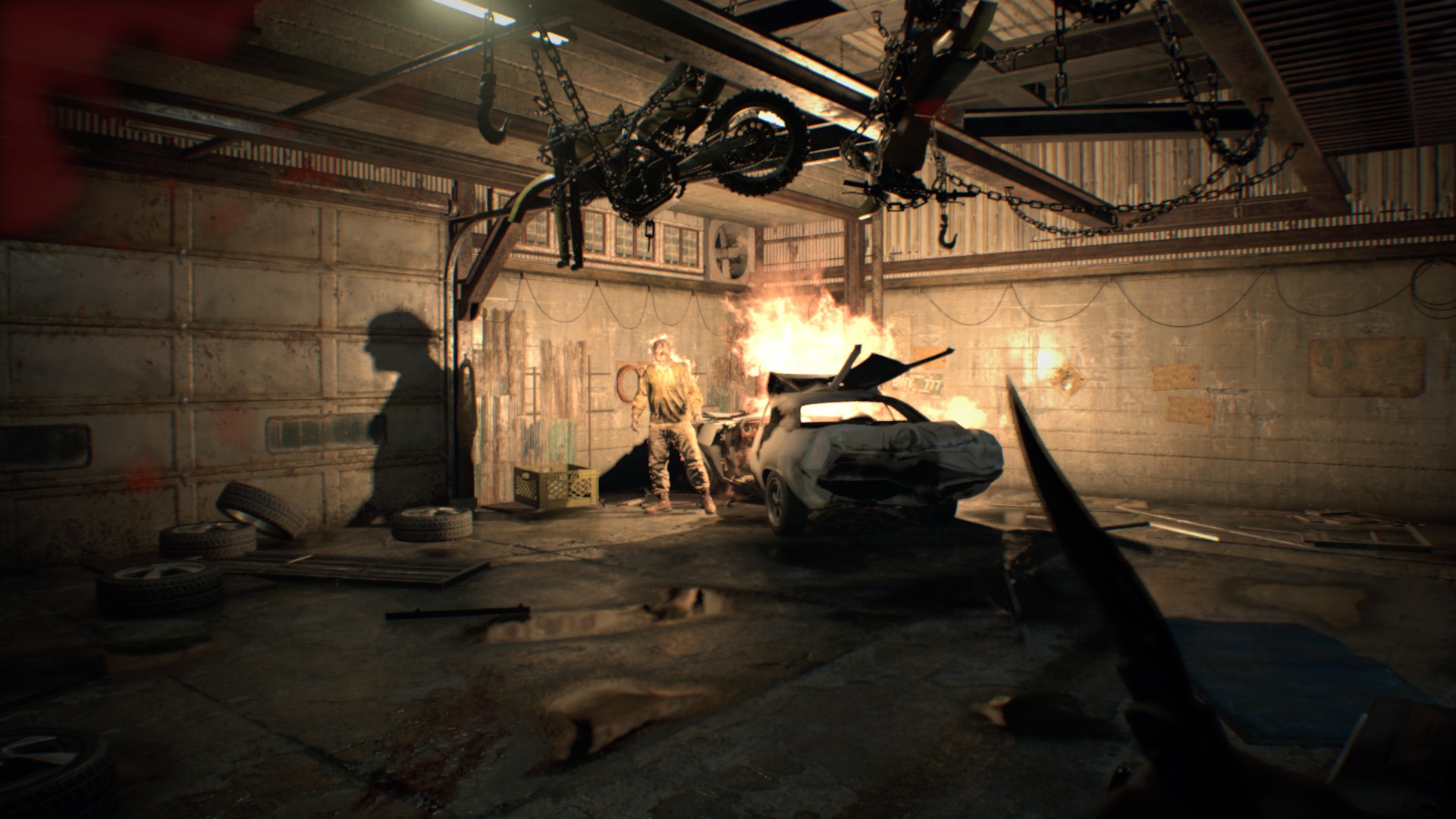
When serious weapons fall into the hands, life doesn’t get any easier. On the contrary, more extravagant enemies join the stage with the farmer maniacs. Their ability to materialize directly from the liquid that slowly engulfs the interiors is very inconvenient in conditions of ammunition shortage, so each battle is preceded by a frantic consideration of alternatives. Will one magazine be enough? Are there any supplies in the room? Is it even worth getting involved? If you run, where to? A-a-a!
The action is interspersed with mandatory boss fights. They are divided into two classic categories: “shoot-shoot-shoot” and “shoot-shoot-shoot at red bubbles” – and the weapon design here is good enough to allow such banality. To put a juicy charge of buckshot into someone who has been intensely bothering you for the past two hours, and then say something like, “And may you not resurrect, fak-perefak!” – priceless.
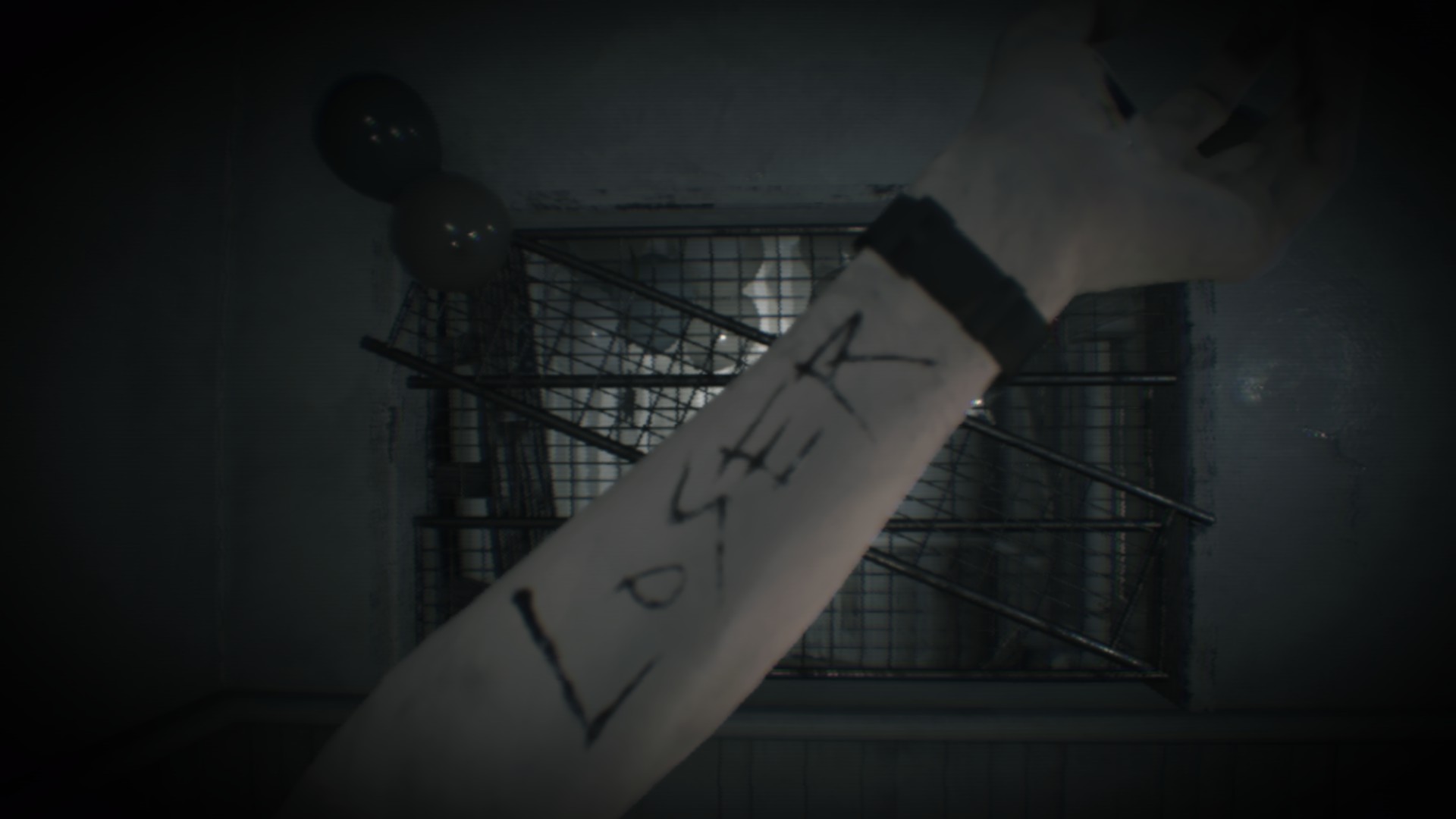
When I asked the tattoo artist to ink a beautiful foreign word.
But out of all the notable features of the original Resident Evil that have survived to this day – why? Why is it?! Why did this terrible inventory system not stay in the 90s? Just so you know, you still can’t empty your narrow pockets here – there are special suitcases in special places for that, and that’s it. Damn it, with the bullets and first aid kits, but when an important item doesn’t fit because of a handful of gunpowder picked up in a hurry, it becomes sad. There’s already enough backtracking in the game, and this creates its own annoying category.
Well, there is, of course, an option – to remove the extra item. But it’s like if your parents threw away all your toys from childhood that weren’t in their place. A taboo on creative disorder, you see.
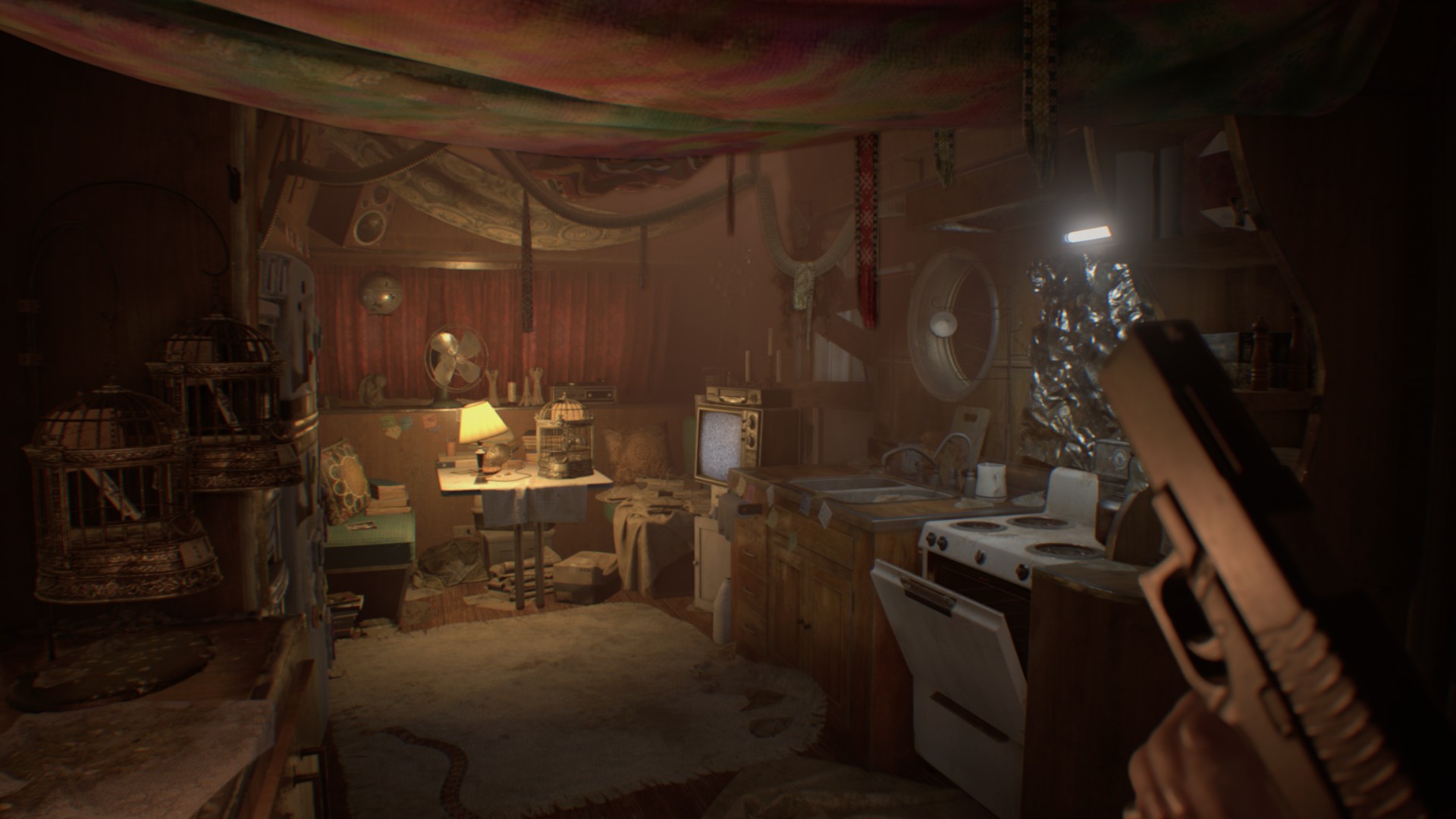
And you probably didn’t notice, but Resident Evil 7 has moved to a first-person perspective. After more than 20 years, Shinji Mikami’s original concept has finally come to life.
And it must be said, the new perspective gives the events a repulsive naturalness. Everything that players often see from a distance through fixed cameras now boldly takes center stage. The creators actively take advantage of this, offering, among other things, a close-up view of crawling centipedes on the wall, digging through a headless corpse, and fishing out a lockpick from a box of maggots. It’s disgusting, but oh how I want to see all of this in virtual reality!
By combining adventure elements and a first-person perspective, the game becomes an incredibly immersive experience. It is cinematic thanks to a huge number of high-quality cutscenes, but there are also plenty of opportunities for interaction with the surrounding world. Compared to it, other games in the genre seem empty and lacking in interactivity.
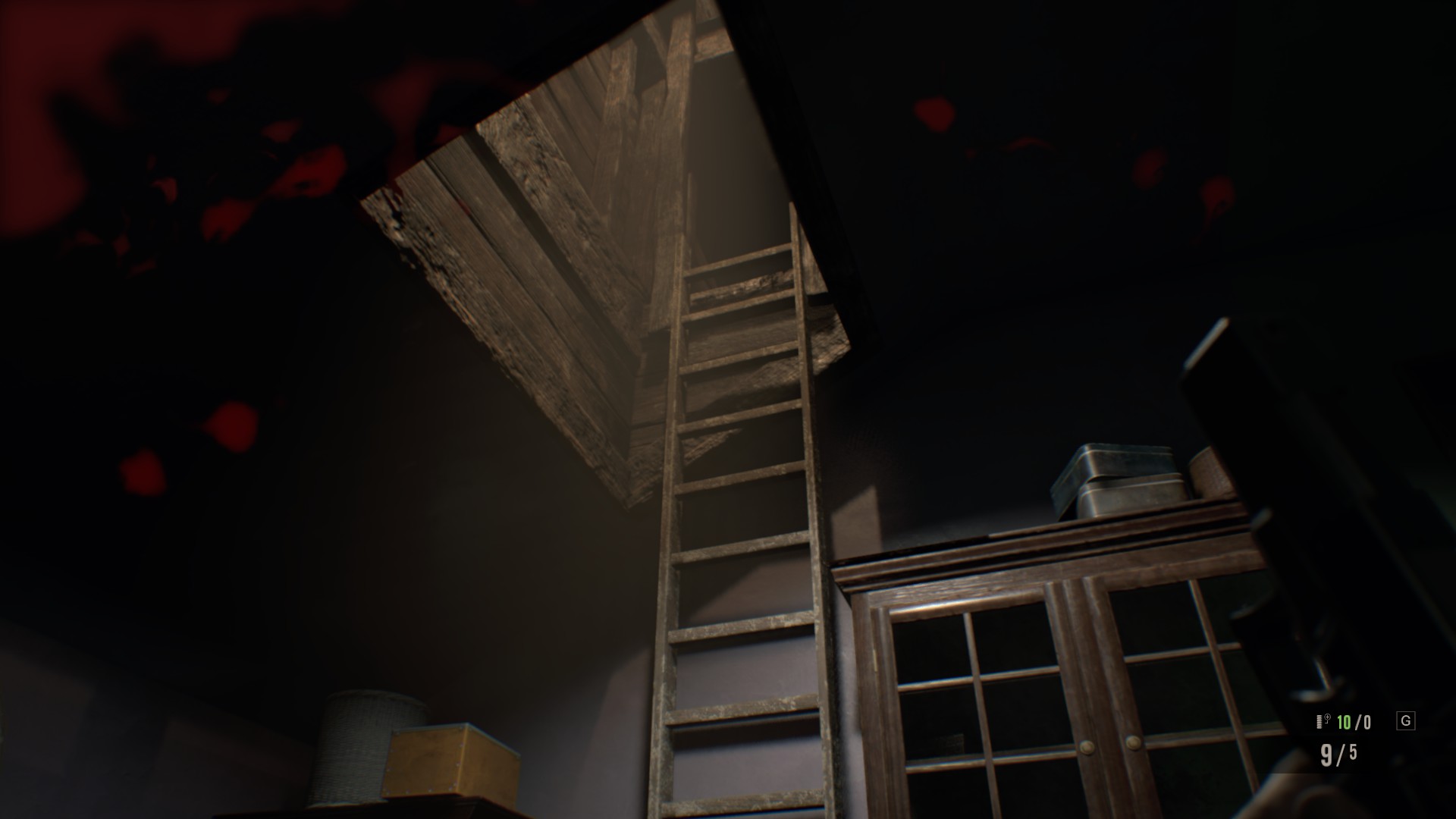
The worst dilemma in horror: go up to the attic – or stay in the children’s room.
As for the thrilling and frightening aspect, Resident Evil 7 is not insanely scary and sometimes overly relies on cheap tricks. Various “breathing through the wall” and “grabbing the hand” moments, supported by excellent atmosphere, often work rather than not, but a series of such venerable age, it seems, should not peek into the manual for early access indie horror games.
Nevertheless, the game fulfills its primary goal – it instills a sense of vulnerability and constantly maintains it. At every twist of progress, at every safe haven, it has a multitude of ways to dampen the player’s confidence. Here, with caution, you pull the scripted levers, hoping that the way back will still be clear, and you don’t really rejoice when you find a pack of bullets. There is a high probability that a significant reason to use them awaits around the corner.

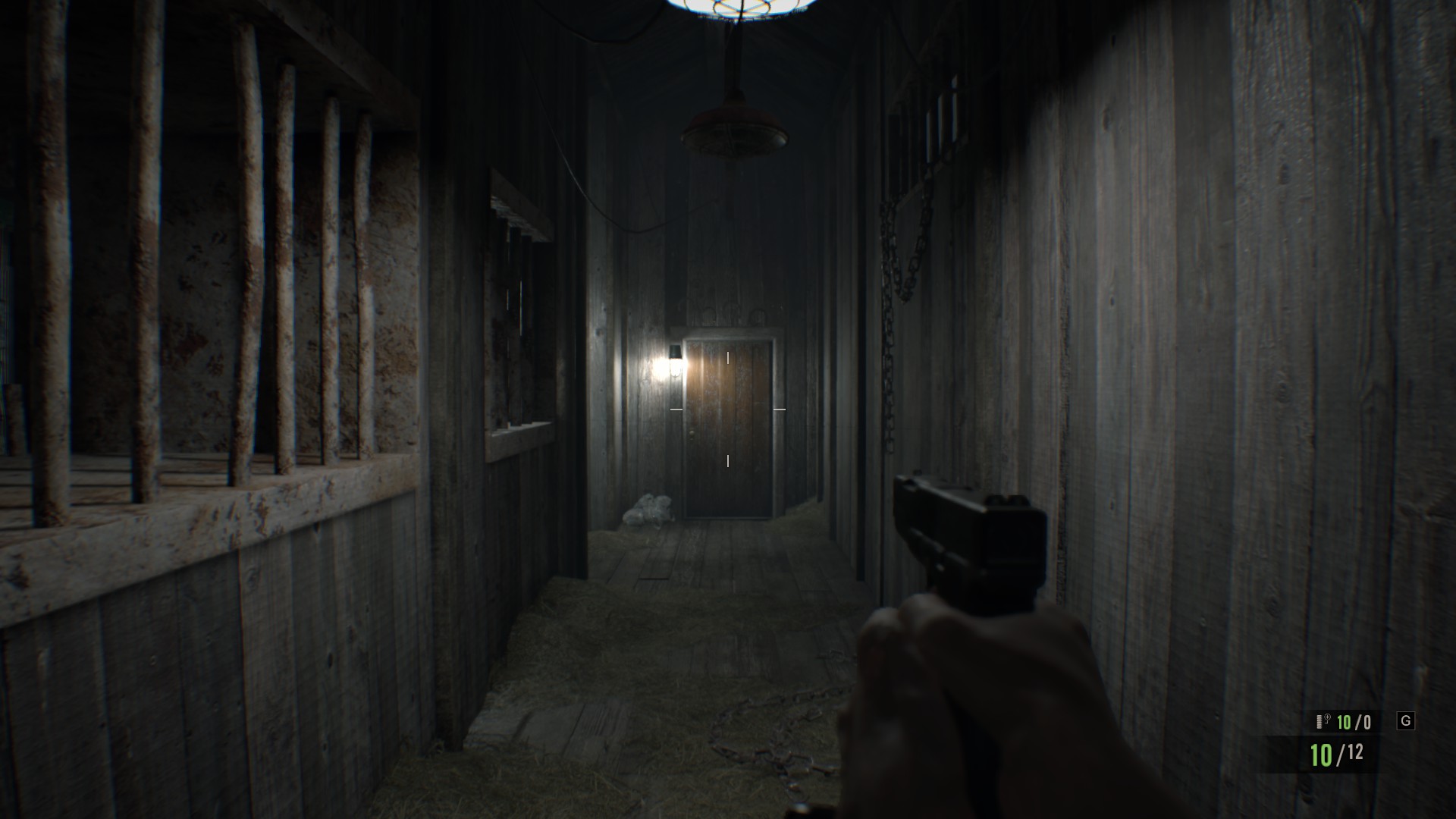
One more step, the second one – and BOOM! The stretch is practically right in front of your nose.
The visual aspect of the question evokes the most ambiguous reaction. Resident Evil 7 manages to look like a real movie that even the polished P.T. would envy in one second, and in another, it spits out murky textures with a moiré pattern instead of shadows. However, in return, it provides impeccable performance on the maximum preset, so there is no need to complain at all. If everything is done correctly (and it is), there is simply no time to pay attention to the graphical flaws.
The successful duration should also be considered an advantage. There is an invisible temporal boundary in horror games, beyond which genuine fear is replaced by fatigue and feigned “oh, I’m scared” – Capcom did not cross it, but came close. After about twenty minutes before the end, you start to irritably glance at the clock, but this problem is more of a plot issue: towards the end, the narrative rapidly reveals all the cards, and there are no intrigues left to continue for.
* * *
The fusion of the necessary old and elegant new, traditional values and a completely different format is not always needed. Resident Evil 7 delivered such a powerful horror spectacle that now Outlast 2 will have to make a strong effort to keep us glued to the screen.
Share
Discuss
More Reviews

